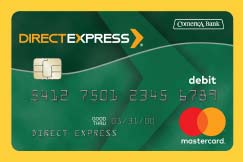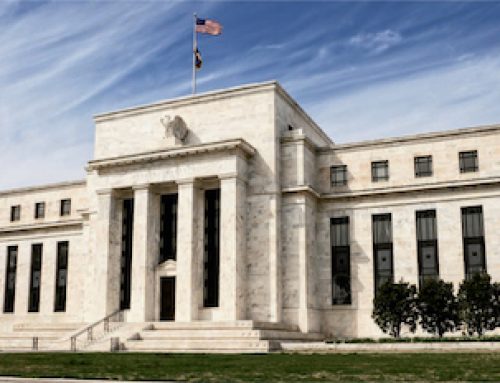April is Financial Capability Month, originally called Financial Literacy Month. It has been commemorated annually since the U.S. Senate recognized it in 2004. It began as a time to promote educational programs that empower individuals – particularly those who are unbanked – with knowledge and training to confidently direct their financial lives. Over time, the focus on financial literacy has broadened and the term “financial capability” has come to the fore – but what does “financial capability” mean, and where does Direct Express® fit into it?
This broadening of focus is, in part, an acknowledgement that without access to financial systems and mainstream financial tools for budgeting, receiving funds, saving, and making transactions, financial literacy can only take you so far. We have said before on this site that initiatives to address the challenges of the unbanked generally fall into two areas: they either aim to 1) broaden access to financial services, or 2) provide the education needed to make use of the financial services available.
Taken together, these could be considered the “twin pillars of financial capability”. Financial capability, therefore, can be defined as access to financial tools, coupled with the training and knowledge to use them effectively.
Direct Express® and Financial Capability
The Direct Express® program was established primarily to reap the efficiencies and cost savings that result when paper checks are replaced with electronic payments. Nevertheless, solving the challenge of how electronic payments can be made to individuals without bank accounts through a network-branded prepaid card, also put a powerful financial tool in the hands of beneficiaries. This meant significantly increased financial capability for millions, which takes several important forms:
- The Ability to Make Electronic Payments
The fundamental advantage of Direct Express® is that it brings the financial mainstream to unbanked individuals via a network-branded debit card. Prior to this, paying bills often required using cash for money orders. This subjected beneficiaries to additional fees and could be extremely inconvenient. Once the money orders were secured, bills had to be paid in person at an office. This usually involved public transport, standing in line, and time away from work.
Direct Express®, as with any other debit card, is accepted in nearly all stores and can be used to make payments online and over the telephone, or, for those that wish it, to access cash at ATMs, bank teller locations, and through cash back in many stores.
- Freedom from Check Cashing
Receiving benefits electronically via Direct Express® also eradicates the need for cardholders to cash checks. Previously, benefit checks needed to be converted to cash so that bills could be paid. For city dwellers, this meant a trip to the check casher down the street, but in rural areas, often involved a bus ride or at least taking time off work.
Check cashing fees can be significant. The national average is four percent of the check’s face value. It is estimated that check cashing services cost employees $1,042 a year[i] and that a low wage earner can spend as much as $40,000 over his lifetime in check cashing fees[ii]. Freedom from the need to cash checks represents increased financial capability.
- Confident Financial Planning
Prior to Direct Express®, beneficiaries found their payments at the mercy of mail delays. Even today, 40 percent of claims filed with the U.S. Treasury are related to paper checks, even though checks are used in only five percent of disbursements. The reliability of electronic payments allows for confident planning – an important financial capability.
This increased financial capability became particularly important during the COVID-19 pandemic. Direct Express® enabled quick, seamless distribution of stimulus payments without the need for beneficiaries to cash checks in a lockdown environment. A similar process was later used for the Advance Child Tax Credit Payments.
- Safety and Protections
Prior to Direct Express®, once a check was cashed, the beneficiary had to carry or store the cash they received. This made them vulnerable to crime or even accidental loss. Direct Express® eliminates this risk.
Direct Express® cards also have inbuilt- protections, including the EMV chip– technology that is considered the global standard in card protection. Direct Express® also provides both “Regulation E” protection – a federal regulation that protects Direct Express® cardholders from unauthorized use of their cards – and FDIC insurance, which protects Direct Express® cardholders’ money up to the maximum legal limit ($250,000 per depositor, per insured bank, for each account ownership category).
These protections, which are identical to those provided by mainstream bank accounts, are a capability that would otherwise be unavailable to beneficiaries dependent on paper checks.
- Convenient Money Management
An estimated 90 percent of Direct Express® beneficiaries own a smartphone. Since 2015, these cardholders have been able to use the DX℠ Mobile App, for safe, secure, convenient, and portable access to their account information. This app offers convenient mobile money management, allowing users to check their card details, balances, and transaction history, and incorporates alerts that keep cardholders safe by notifying them of password changes and login attempts. Additional alerts can be customized, to inform a cardholder when their account balance dips below a pre-set threshold, for instance..
The DX℠ Mobile App provides several additional self-service options which help app users avoid calls to Direct Express® customer service center. These include the ability to lock/unlock the card at will, order a replacement, and change their home address and Personal Identification Number (PIN). Finally, the app also incorporates a Mobile Expense Analyzer which breaks out spending on the card into categories to help with budgeting.
Financial Education
Supplementing the capability provided by the Direct Express® card itself, is the Direct Express® Financial Education Center, which we looked at last month. This a financial learning platform that provides cardholders with knowledge to make informed financial decisions. It offers a library of topics organized into short micro-learning moments within broader topic areas, such as: budgeting and saving, privacy and security, and elder financial fraud prevention. These are designed with engaging content and interactive exercises that allow cardholders to reinforce what they learn.
Cardholders can access the Financial Education Center through the Direct Express® mobile app or cardholder website, from any computer or mobile device that has internet access. Modules and materials are available in both English and Spanish.
Financial Capability in Action
Cardholders have regularly expressed their satisfaction with the increased financial capability that Direct Express® provides them. Video interviews available on this site tell the human story of card usage.
We particularly like Gary, speaking about Direct Express® as a budgeting tool and Frederick, who talks about how empowering he finds card ownership.
[i] Source: Mercator Advisory Group, “Payroll Cards: 100% Electronic Payments 80% of the Time, Crossing the Market Finish Line”, January 2009
[ii] Source: Bankrate’s 2010 Checking Study
SOURCE: DIRECT EXPRESS®








